3D Printing - FDM - Filament Choice
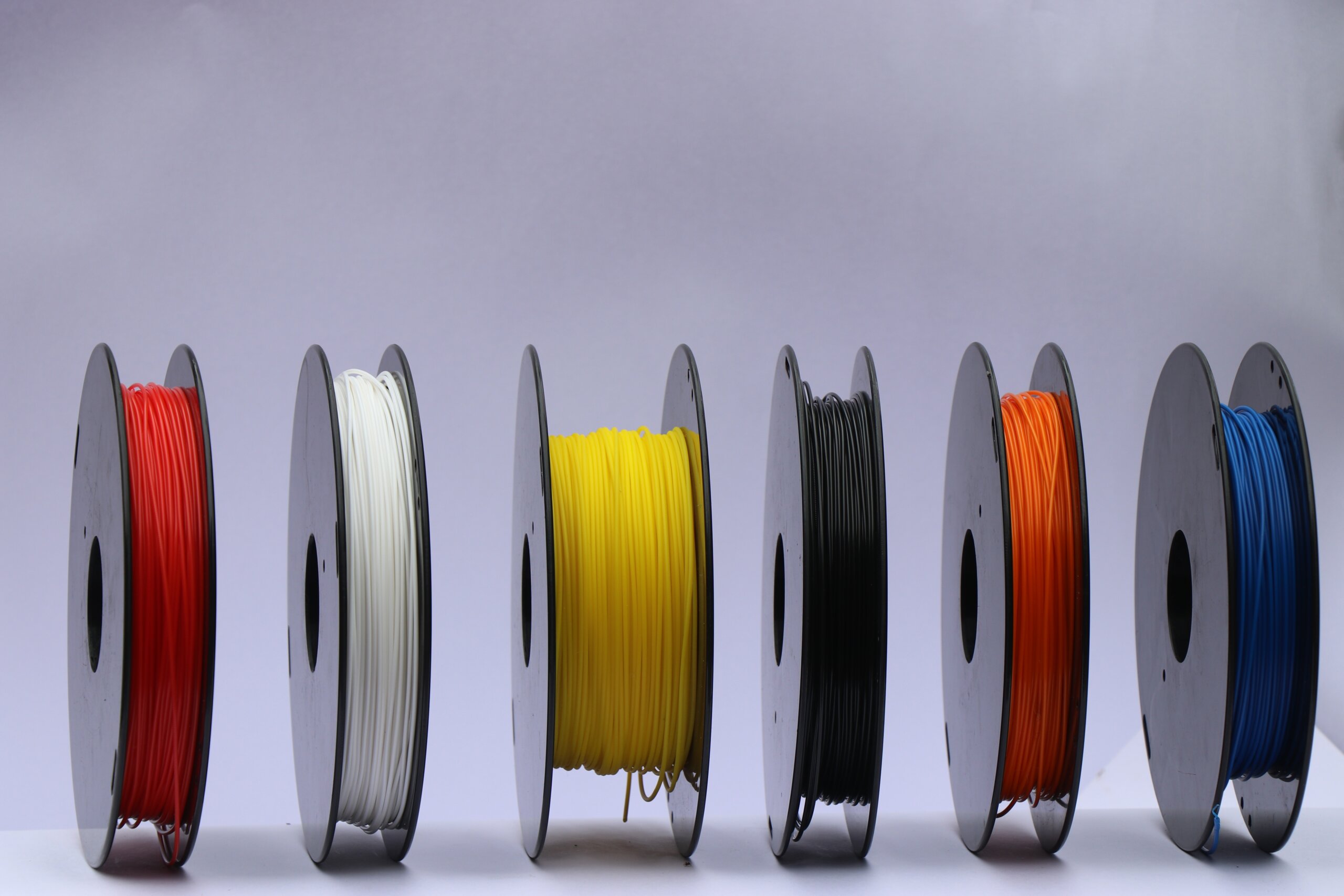
Expertise
A rapidly evolving market and a diversified offering
Since the launch of the first 3D printer by Stratasys, which only offered ABS as a printing material, the plastic filament market has expanded to offer dozens of different materials. This expanded offering provides numerous opportunities and possesses distinctive physical and aesthetic characteristics to adapt to each application.
In 2009, the Cupcake CNC was designed to accommodate a 3mm ABS filament. This choice was mainly exploited due to its availability. Indeed, ABS filament was commonly used in the 1980s for the repair of plastic parts by hot air welding. This process was mainly used in the automotive sector. Stratasys offered, in packaging specifically dedicated to its printers, an engineering plastic based on ABS, ABSplus, which was sold at more than $150 USD per kilogram.

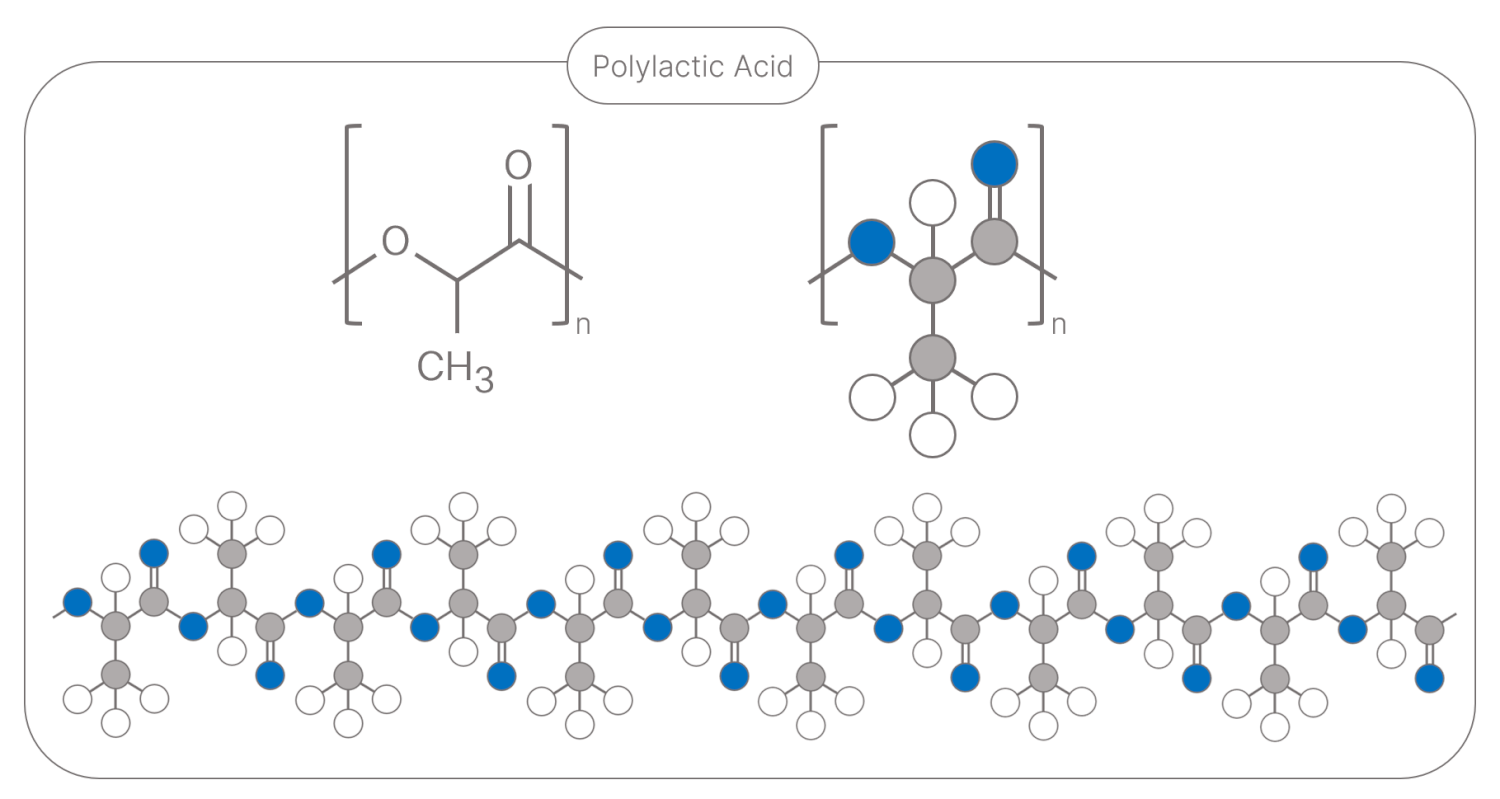
The first revolution in the printing filament market was the advent of PLA in filament form. Created in the early 2000s, this material has proven to be a prime material for this process: fairly low melting point, limited warping, odorless and ecological. It is today the most used material for 3D printing. In 2009, several companies were already offering PLA filament: MakerBot, Ultimachine, Faberdashery, RepRapPro.
Of the companies mentioned previously, Ultimachine, founded in 2008, specialized in manufacturing filament for the hobbyist 3D printing market. They brought innovative materials to the market that transformed the technology:
TPU / Nylon / PETG / PEEK / PC

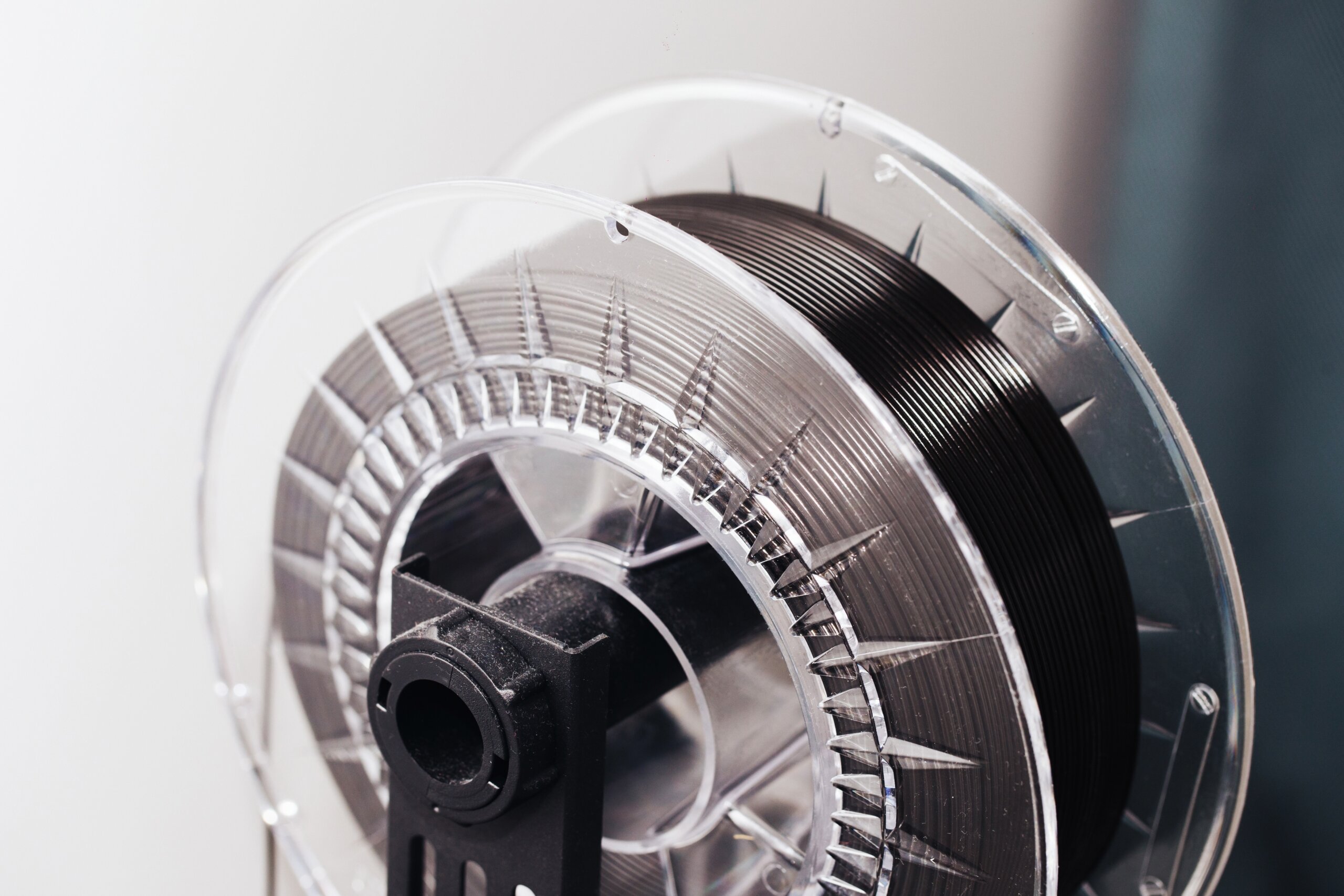
Little time had passed between the democratization of 3D printing and the abundance of printing filaments. Another significant breakthrough took place in 2013 when ProtoPlant marketed the first carbon fiber reinforced filament: PLA-CF. Several companies were working in parallel on similar solutions. Their innovation emerged shortly after:
PA-CF / PET-CF / PETG-CF / ASA-CF / PEKK-CF
PP-GF / PC-GF / PA-GF
“Whoever has the choice also has the torment.”
The choice of filament should be based on several factors related to the purpose of the final part.
With the spoilt for choice, several points must be considered: the cost, the desired durability, the environment in which the part will be used, the ease of printing to avoid wasting time, the printer available to manufacture. Certain characteristics are quantifiable, which allows several materials available on the market to be compared.
In order to provide a summary portrait of the range of solutions available, Innovation M2 have created a visual support in the form of a table.
The table does not take into account characteristics that could also be considered such as resistance to chemicals, fire resistance, UV stability, ability to do surface treatment on the part, biocompatibility and many others .
Summary comparison of available
3D printing filaments
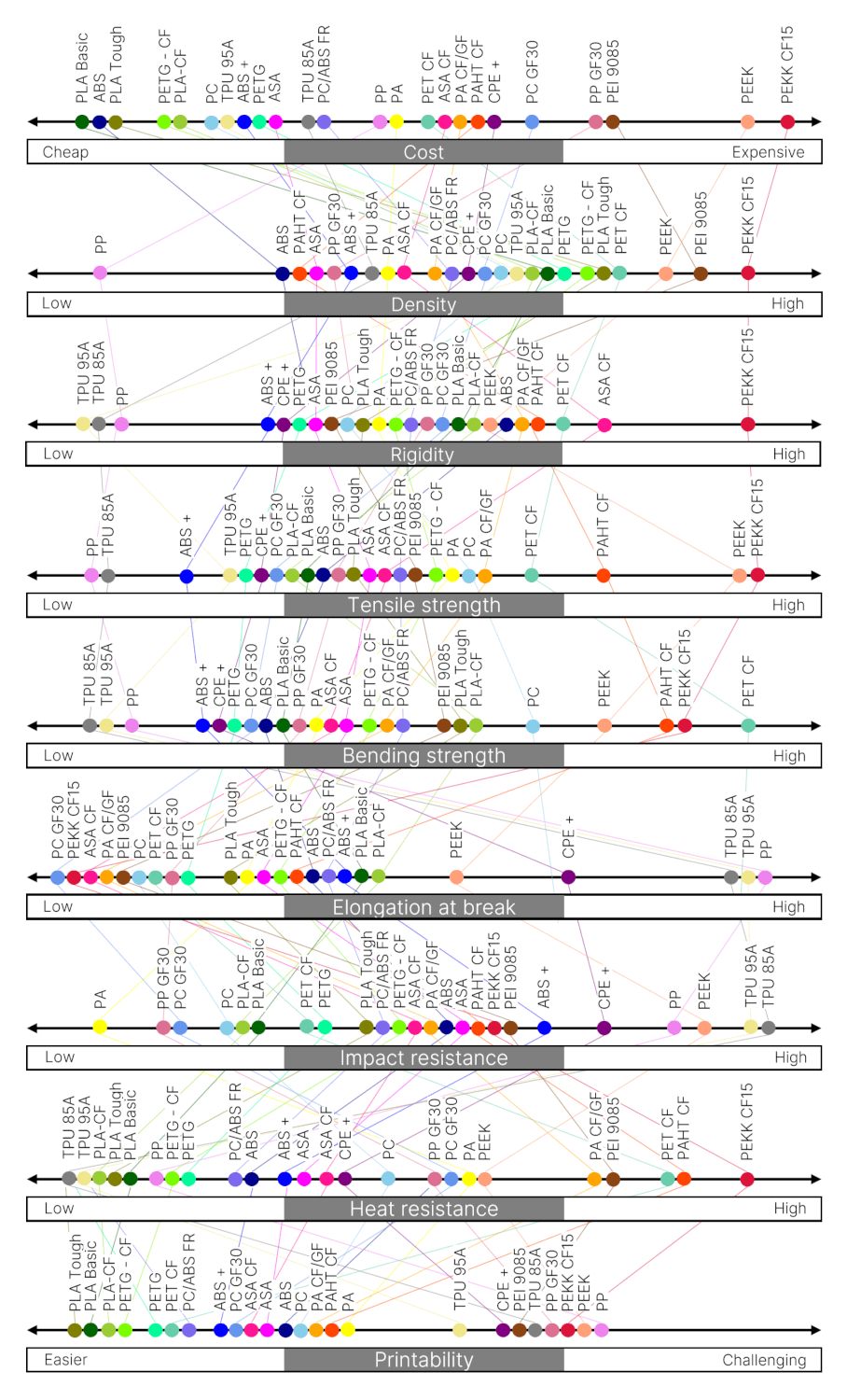
Such tool highlights certain characteristics that can have an impact on the choice of material for your next printed part:
- PETG-CF is a very good choice for making templates (easy to print, low cost, good resistance to tension and bending, interesting rigidity)
- We often think of Ultem (PEI 9085) for heat resistant equipment but PET-CF is a good solution if we have to consider a force on the part (based on the Heat deflexion temperature). The cost of PET-CF is less than half that of PEI 9085 in addition to being very easy to print with the Bambu Labs X1-Carbon.
- For a part with a high need for rigidity (such as a camera support that requires a stable image), ASA-CF can be a very good alternative cheaper than PEKK-CF15.
- If a rigid part must resist impacts, an interesting choice would be CPE+. Although it is less resistant to impacts than other materials, it remains less expensive than PEEK, easier to print than PP and, stiffer than TPU 85A and TPU 95A.
- An all-purpose solution remains PAHT-CF with a reasonable price and satisfactory performance in all respects.
*The references in this text are linked to their detailed technical specifications and their usage at Innovations M2.
Disclaimers
The comments in this article are given to the best of Innovation M2’s knowledge. Please consult our disclaimers to understand the scope of the words in this article.
Explore our guide to FDM printing
-
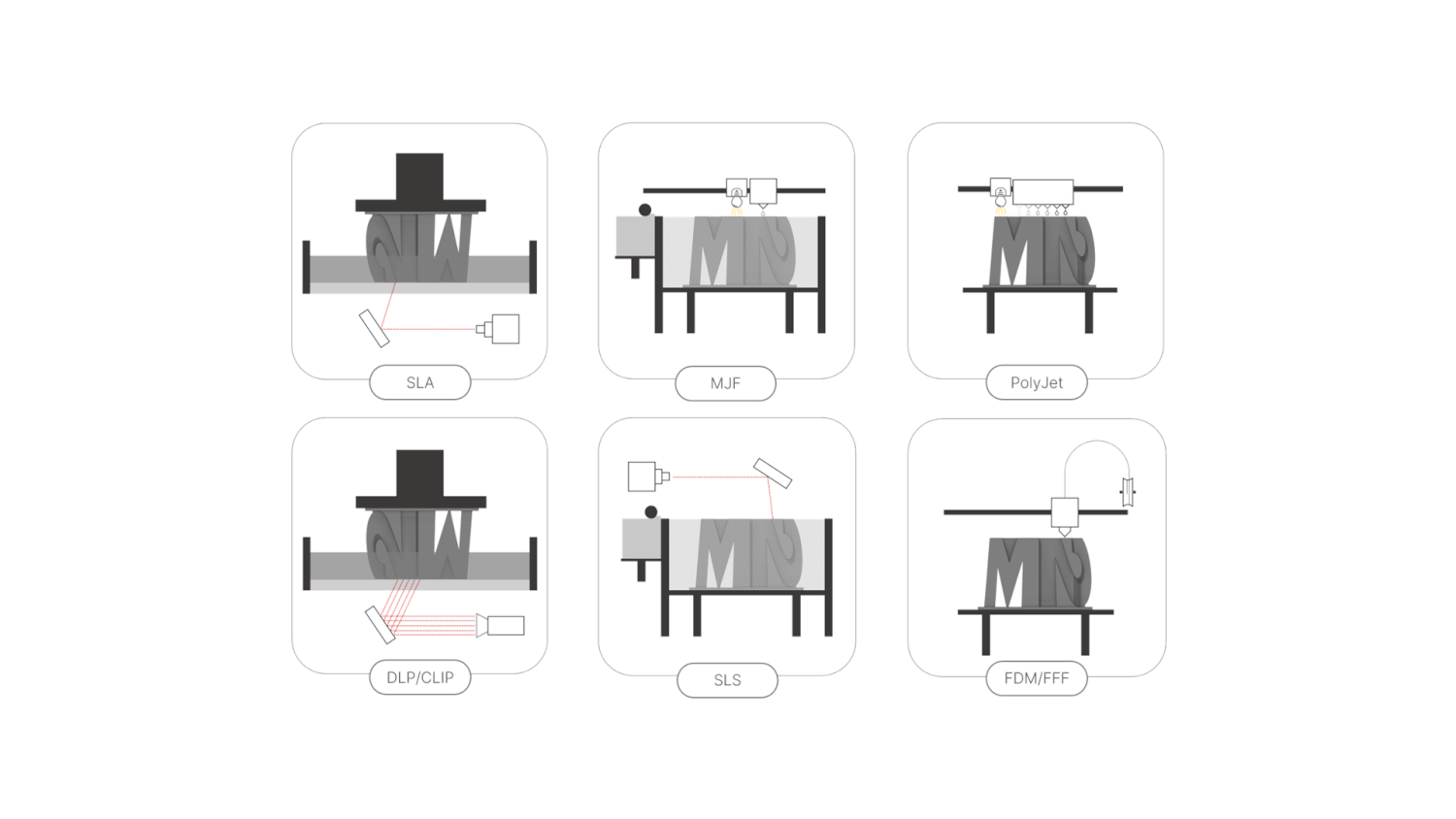
3D Printing - Variety of processes
There are a good number of 3D printing technologies available on the market. Understanding their working principles and discerning their differences allows you to choose the right process according to the needs of the application.
2023Expertise -

3D Printing - FDM - Design Guidelines
At first glance, fused deposition modeling printing (FDM) seems quite simple. Indeed, almost all geometries can be manufactured by FDM. However, it is possible to optimize the design of a part in order to have a good finish, to avoid "post-processing" and to keep a desired geometry.
2023Expertise